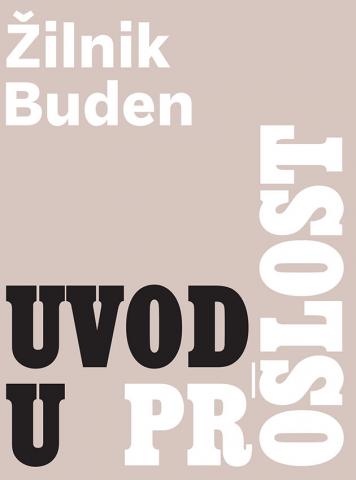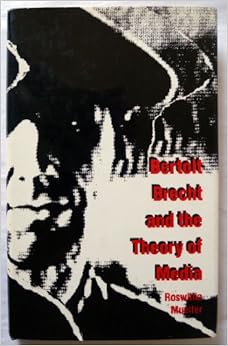Boris Buden, Želimir Žilnik, kuda.org, et al.: Uvod u prošlost (2013) [Serbian]
Filed under book | Tags: · avant-garde, cinema, cultural history, culture, film, politics, yugoslavia

“Ovo je knjiga koja se naizgled bavi jednim sasvim određenim segmentom prošlosti, nečime što se je nekada zvalo kulturna povijest. No, tu kulturnu povijest ona ne tretira kao posebnu disciplinu historiografije koja za svoj predmet uzima ono što je u prošlosti steklo status kulturnog dobra. Za ovu knjigu kulturna povijest je sama forma u kojoj nam se danas ukazuje prošlost. U mjeri u kojoj smo svjesni prošlosti, svjesni smo je kao kulture.
Konkretno, kada se u ovoj knjizi govori o kulturnoj proizvodnji bivše Jugoslavije, o filmovima, odnosno o takozvanom filmskom jeziku redatelja Želimira Žilnika, kada se u njoj raspravlja o sukobima u kulturi, njihovim akterima, odnosu politike i umjetnosti, o ekonomskim pretpostavkama filmske produkcije i njenim društvenim efektima, onda se o tome ne govori u disciplinarnom smislu jedne, recimo, povijesti jugoslavenskog filma, odnosno, individualnog filmskog djela određenog redatelja, pri čemu kategorije društva, politike i ekonomije služe kontekstualizaciji jednog po sebi čisto kulturnog narativa. Kultura se ne zbiva u nekakvom unaprijed zadanom ekonomskom, političkom i društvenom kontekstu; ona je kao takva uvijek već i ekonomska činjenica i politički faktor i društveni proizvod. Ona nam ne govori o tome kakva je prošlost doista bila, nego jest ta prošlost u njenoj prisutnosti, aktualnosti, neizvjesnosti, otvorenosti. Ona je prošlost s onu stranu njene razlike spram sadašnjosti i budućnosti.” (Iz predgovora)
Publisher Centar za nove medije_kuda.org, Novi Sad, September 2013
kuda.read series
Copyleft license
ISBN 9788688567077
221 pages
Roswitha Mueller: Bertolt Brecht and the Theory of Media (1989)
Filed under book | Tags: · aesthetics, cinema, film, film theory, media, media theory, opera, politics, radio, theatre

Bertolt Brecht spent a career puncturing artistic illusion while casting a spell as an innovator that has continued since his death in 1956. Best known to theater goers for “The Threepenny Opera,” “Mother Courage and her Children,” “The Caucasian Chalk Circle” and other production, the great playwright was, in fact, a man of all media. He was interested in radio and the cinema as soon as they appeared in Europe and brought to them, as well as to the stage, a dramatic theory so radical and influential that it has come to be known by the adjective “Brechtian.”
Publisher University of Nebraska Press, Lincoln & London, 1989
Modern German Culture and Literature series
ISBN 0803231326, 9780803231320
149 pages
Reviews: Katie Trumpener, Susan Bennett (Theatre Research International).
PDF (no OCR)
Comment (0)Leshu Torchin: Creating the Witness: Documenting Genocide on Film, Video, and the Internet (2012)
Filed under book | Tags: · documentary film, documentary photography, film, genocide, holocaust, human rights, internet, mass media, photography, politics, television, video

“Since the beginning of the conflict in 2003, more than 300,000 lives have been lost in Darfur. Players of the video game Darfur Is Dying learn this sobering fact and more as they endeavor to ensure the survival of a virtual refugee camp. The video game not only puts players in the position of a struggling refugee, it shows them how they can take action in the real world.
Creating the Witness examines the role of film and the Internet in creating virtual witnesses to genocide over the past one hundred years. The book asks, how do visual media work to produce witnesses—audiences who are drawn into action? The argument is a detailed critique of the notion that there is a seamless trajectory from observing an atrocity to acting in order to intervene. According to Leshu Torchin, it is not enough to have a camera; images of genocide require an ideological framework to reinforce the messages the images are meant to convey. Torchin presents wide-ranging examples of witnessing and genocide, including the Armenian genocide, the Holocaust (engaging film as witness in the context of the Nuremburg trials), and the international human rights organization WITNESS and its sustained efforts to use video to publicize human rights advocacy and compel action.
From a historical and comparative approach, Torchin’s broad survey of media and the social practices around it investigates the development of popular understandings of genocide to achieve recognition and response—both political and judicial—ultimately calling on viewers to act on behalf of human rights.”
Publisher University of Minnesota Press, 2012
Visible Evidence series, Volume 26
ISBN 0816676224, 9780816676224
296 pages
Author’s discussion of the book
Publisher
PDF (updated on 2021-1-24)
Comments (3)
